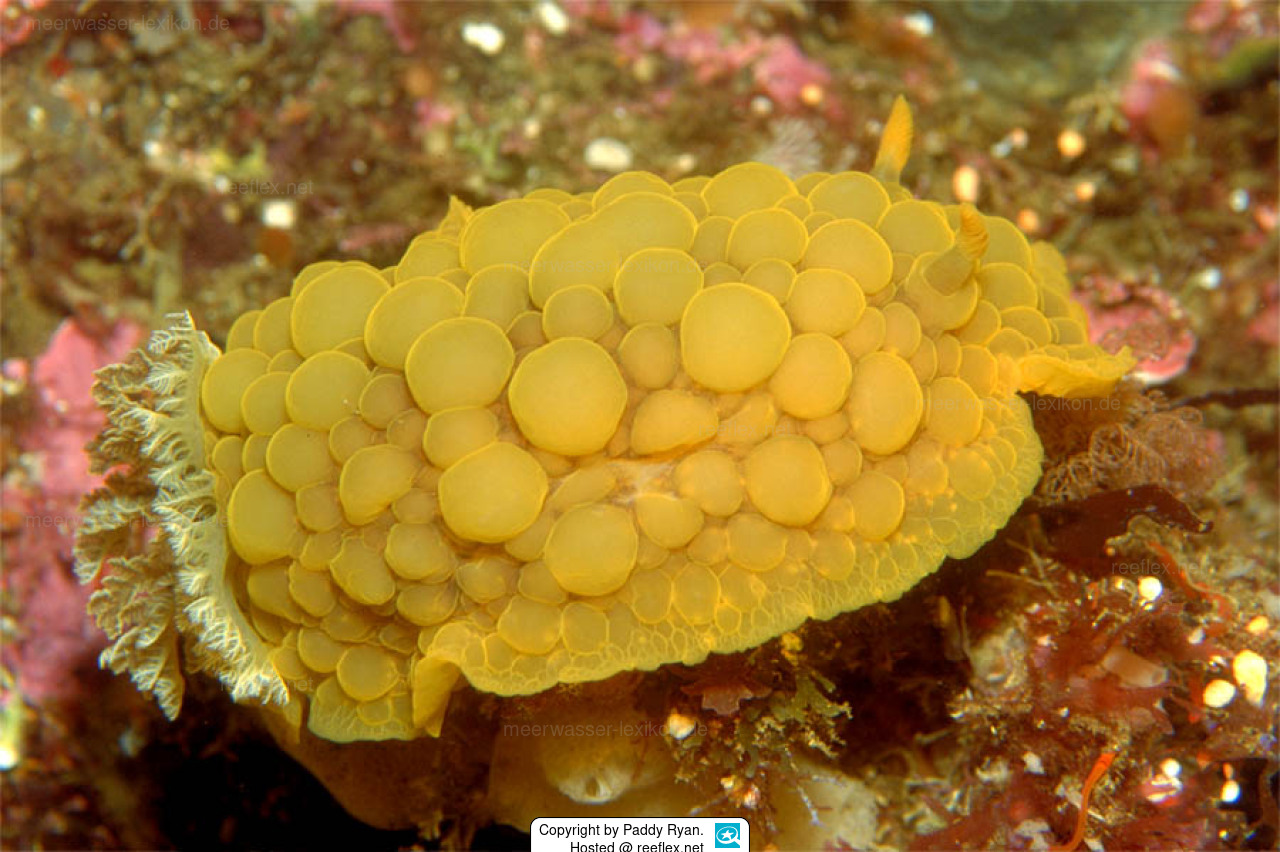Info
Doris wellingtonensis Abraham, 1877
Doris wellingtonensis is likely the largest nudibranch in New Zealand (20 cm in lenght). The body colour can be khaki brown,orange or yellow. On the mantle are round, flattened tubercles.The largest tubercles are concentrated on the middle of the dorsum.
Doris wellingtonensis is often found at low tide under rocks and rock ledges,but also on sandy and muddy bottom. This species feeds on yellow and orange encrusting sponges, such as Halichondria sp.and Hymeniacidon sp.
Synonyme:
Archidoris wellingtonensis
Onchidoris tuberculatus
Doris wellingtonensis is likely the largest nudibranch in New Zealand (20 cm in lenght). The body colour can be khaki brown,orange or yellow. On the mantle are round, flattened tubercles.The largest tubercles are concentrated on the middle of the dorsum.
Doris wellingtonensis is often found at low tide under rocks and rock ledges,but also on sandy and muddy bottom. This species feeds on yellow and orange encrusting sponges, such as Halichondria sp.and Hymeniacidon sp.
Synonyme:
Archidoris wellingtonensis
Onchidoris tuberculatus







 Dr. Paddy Ryan, USA
Dr. Paddy Ryan, USA























